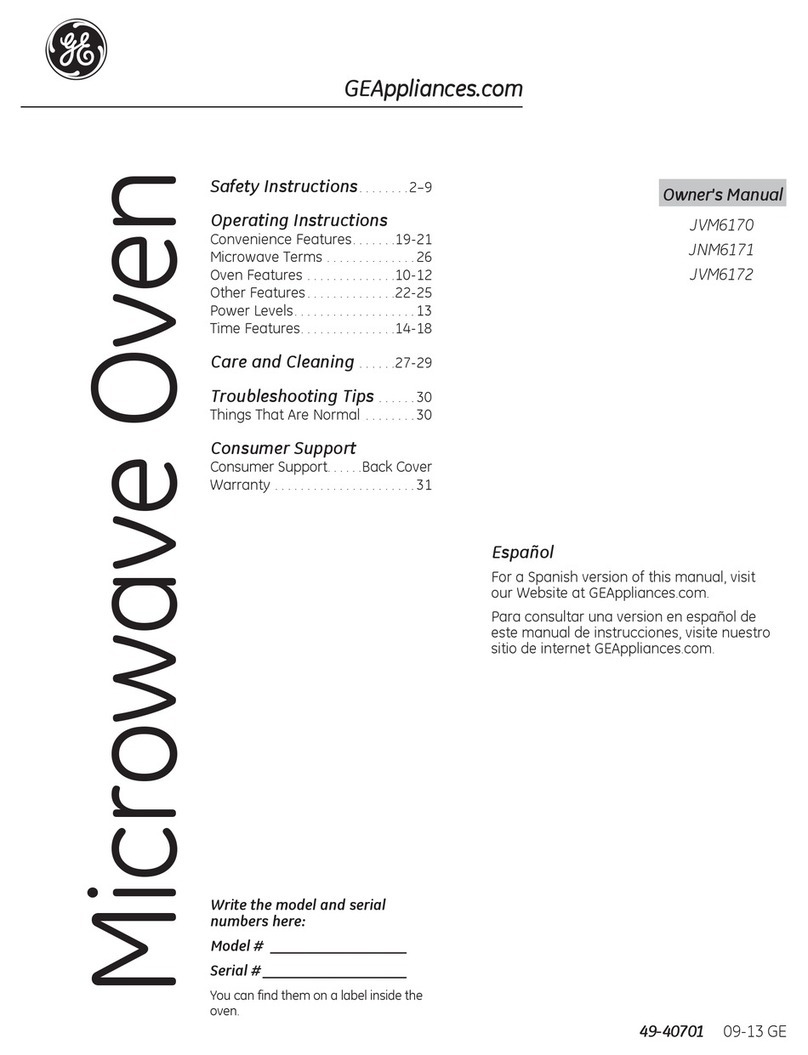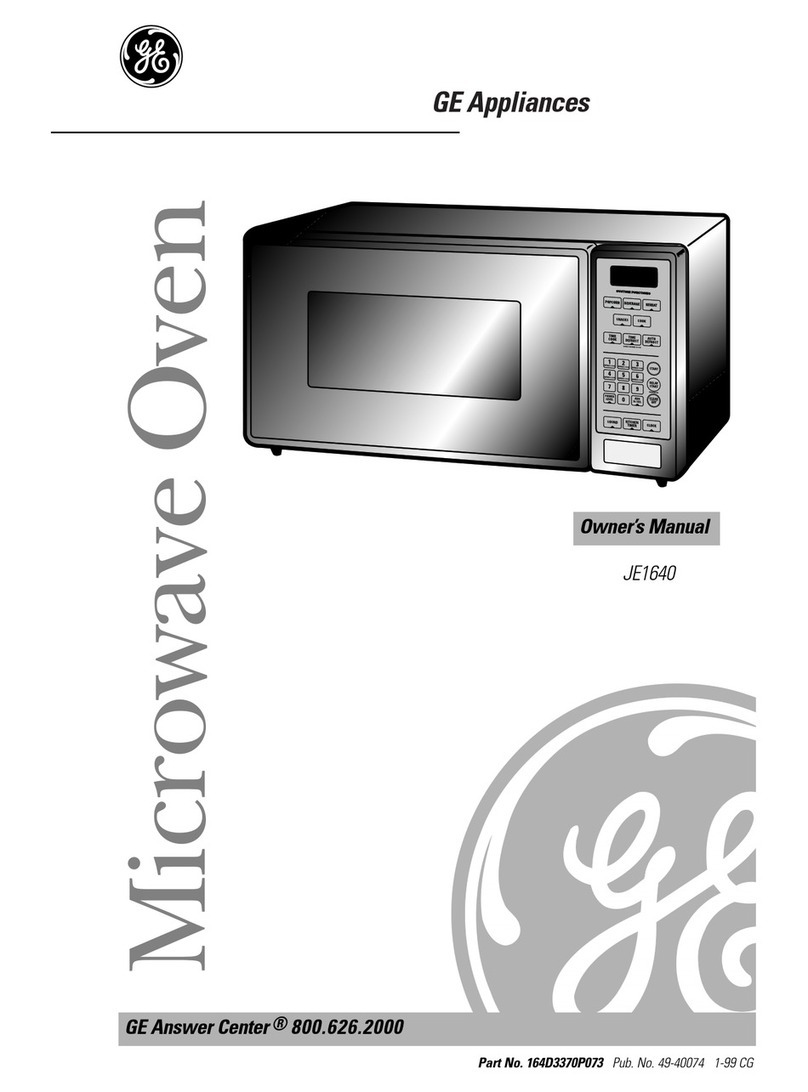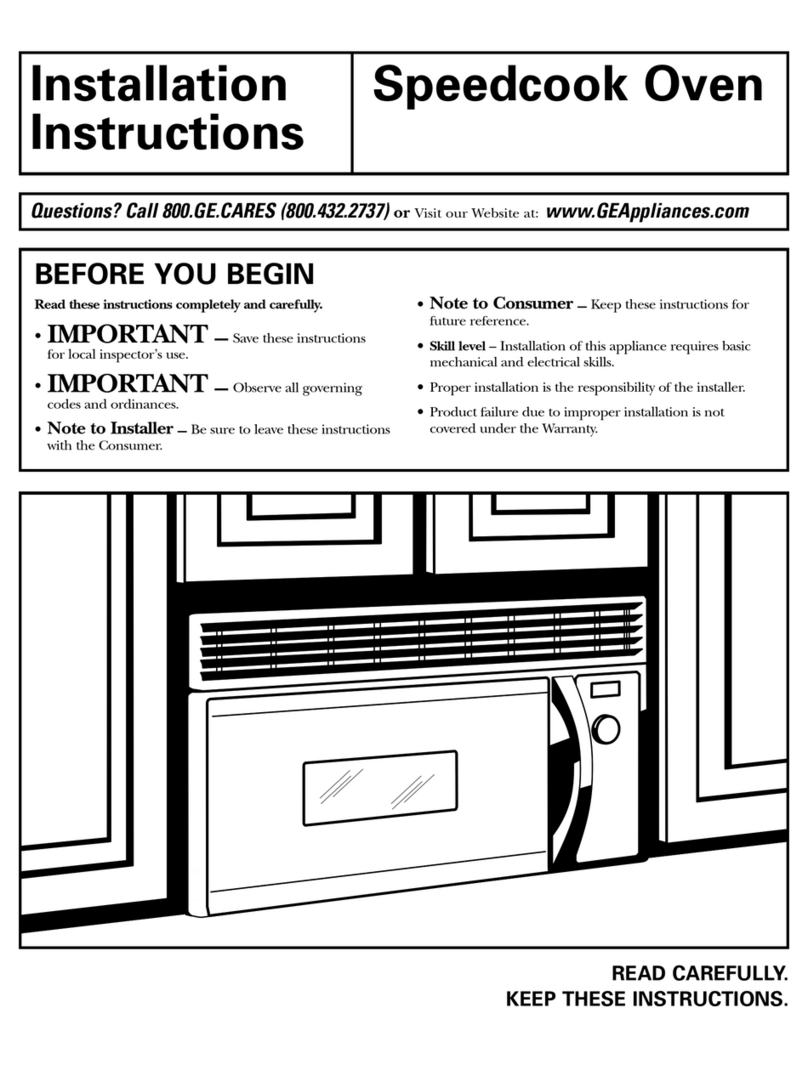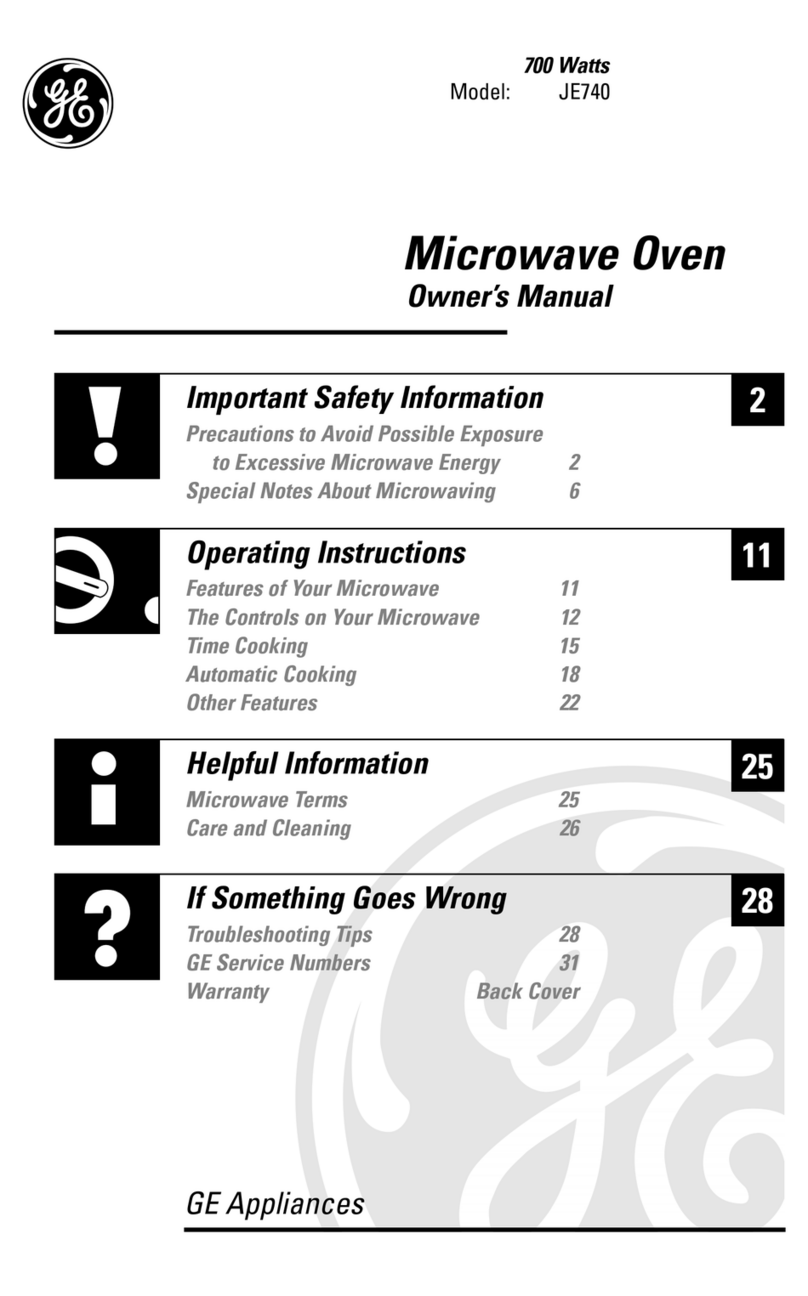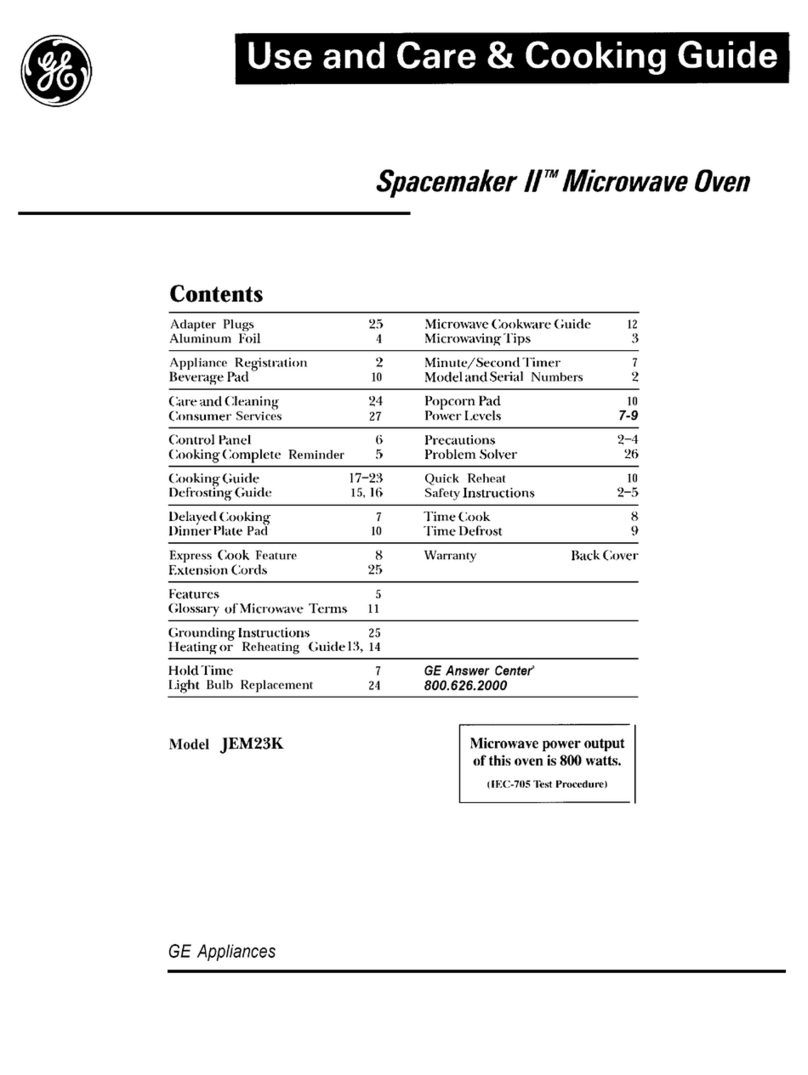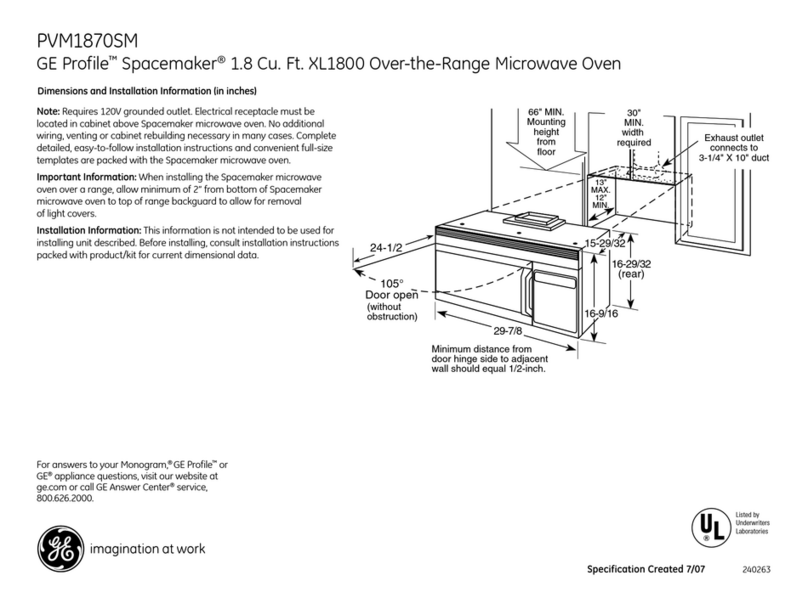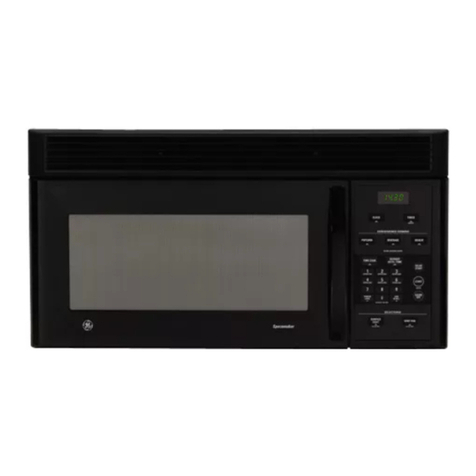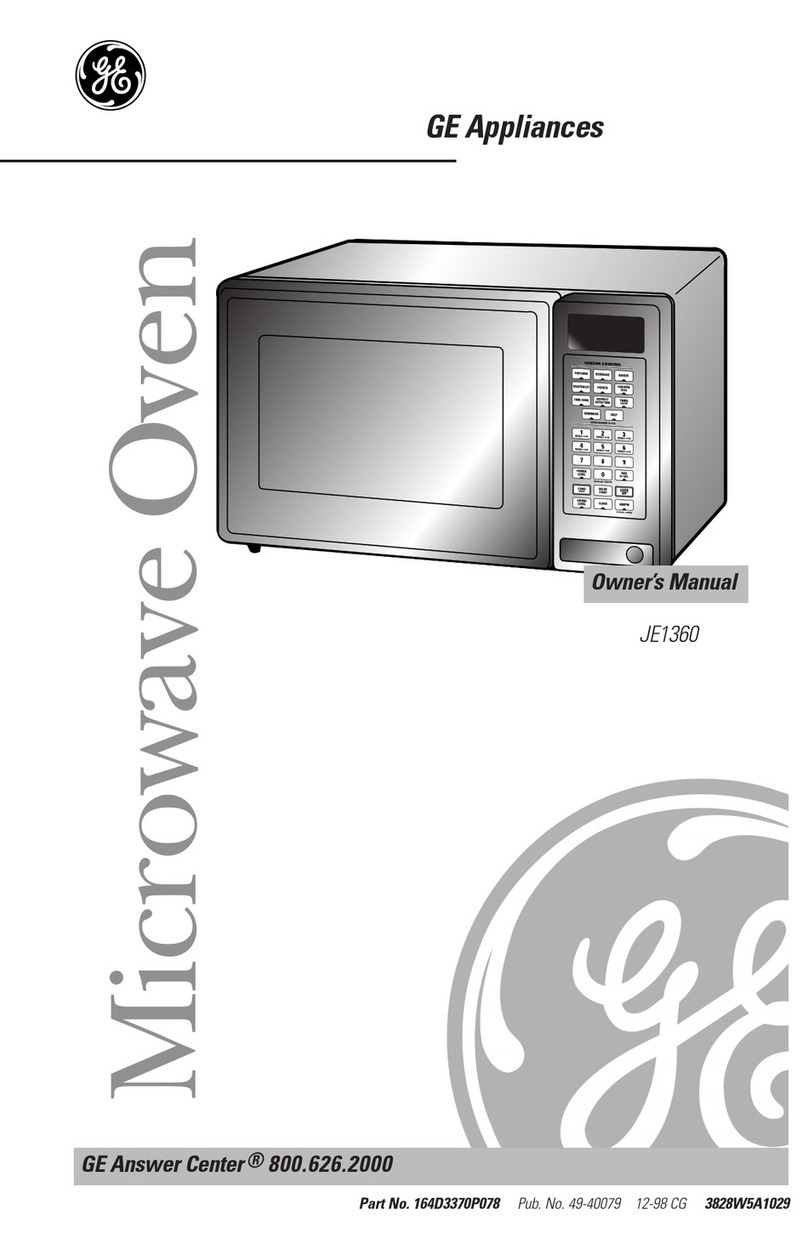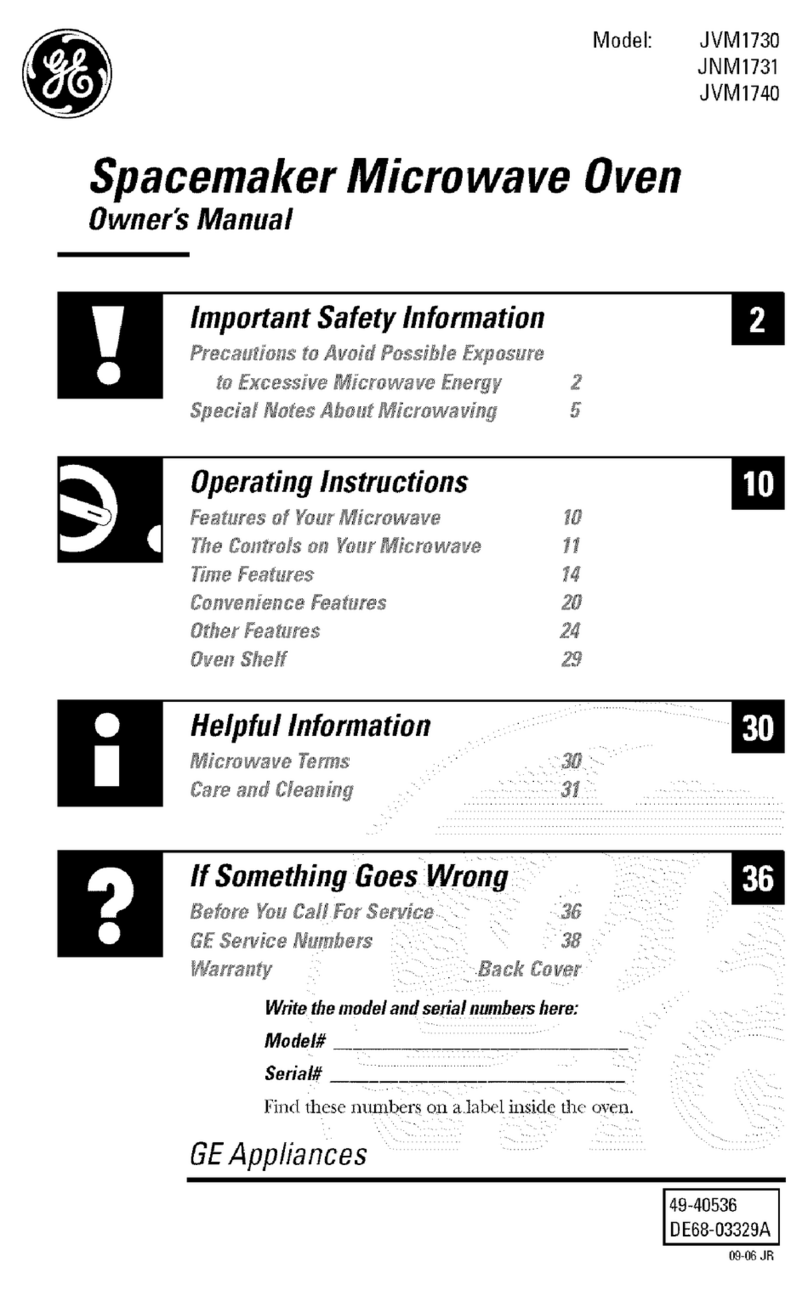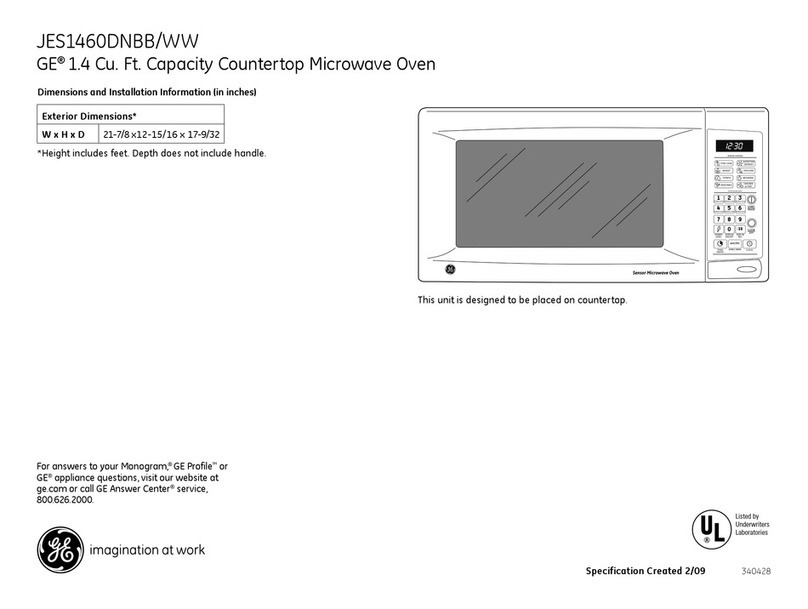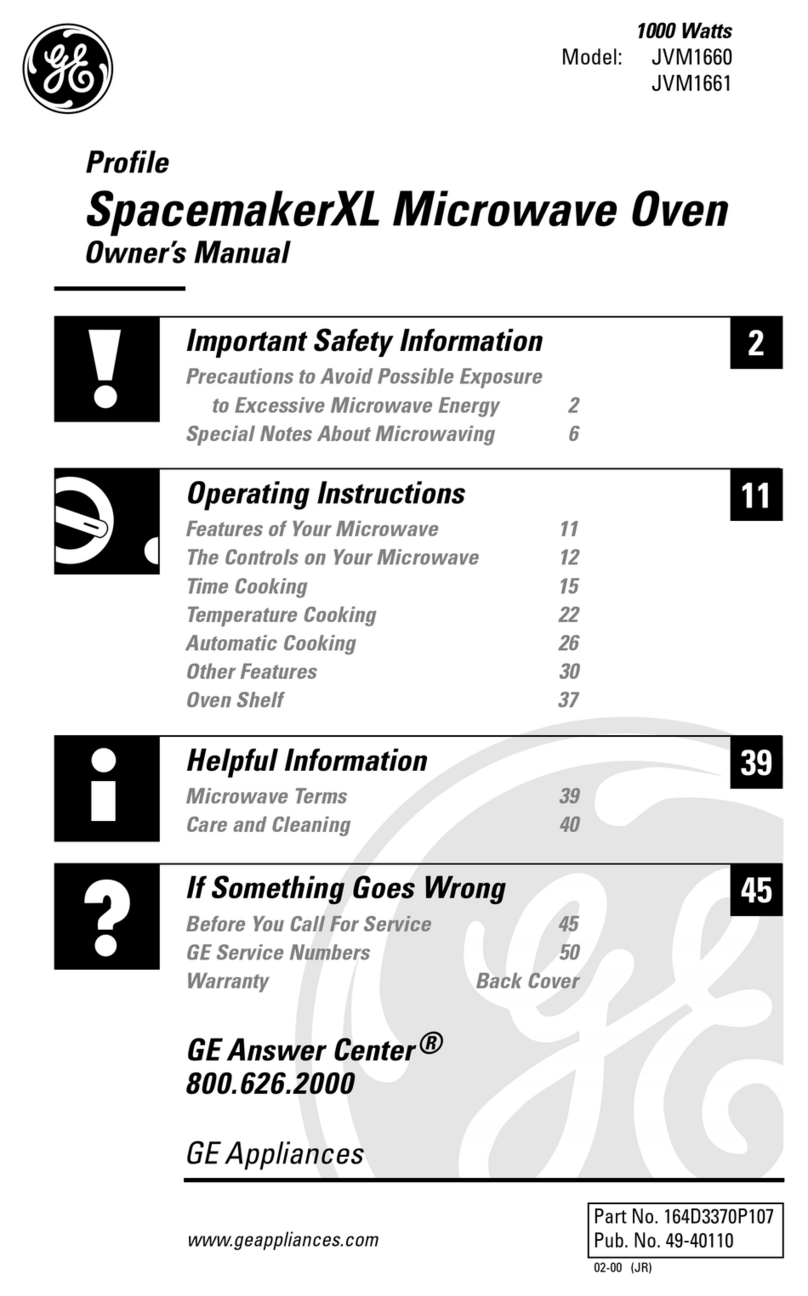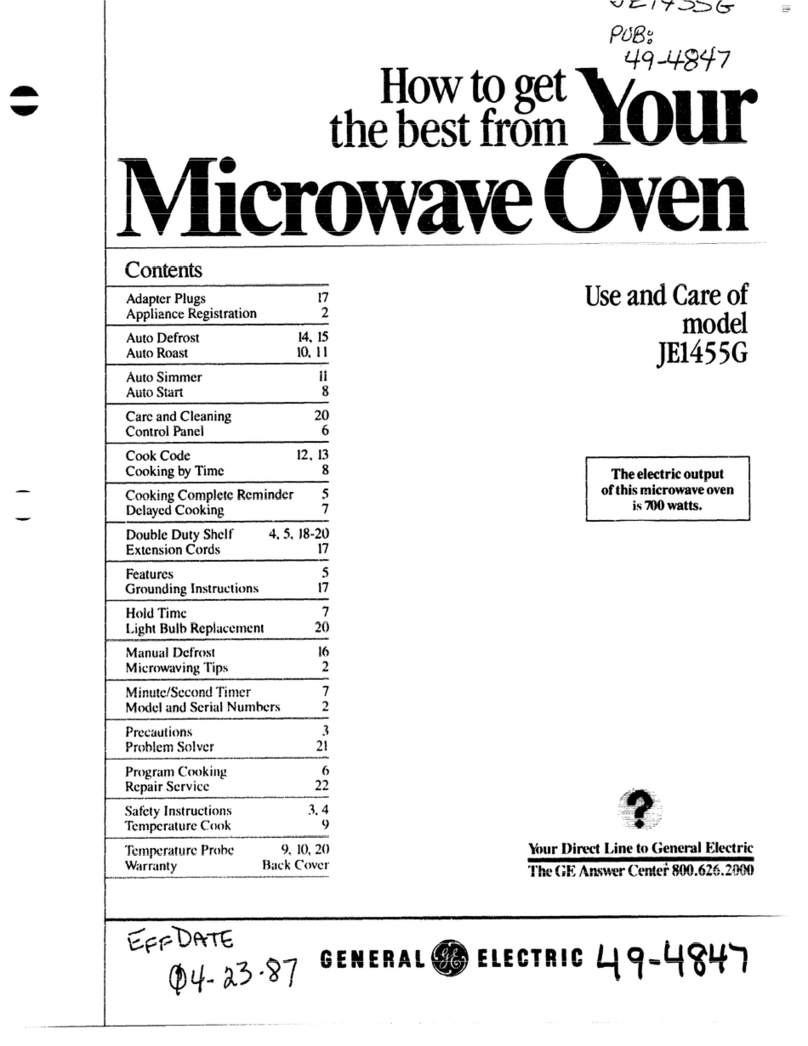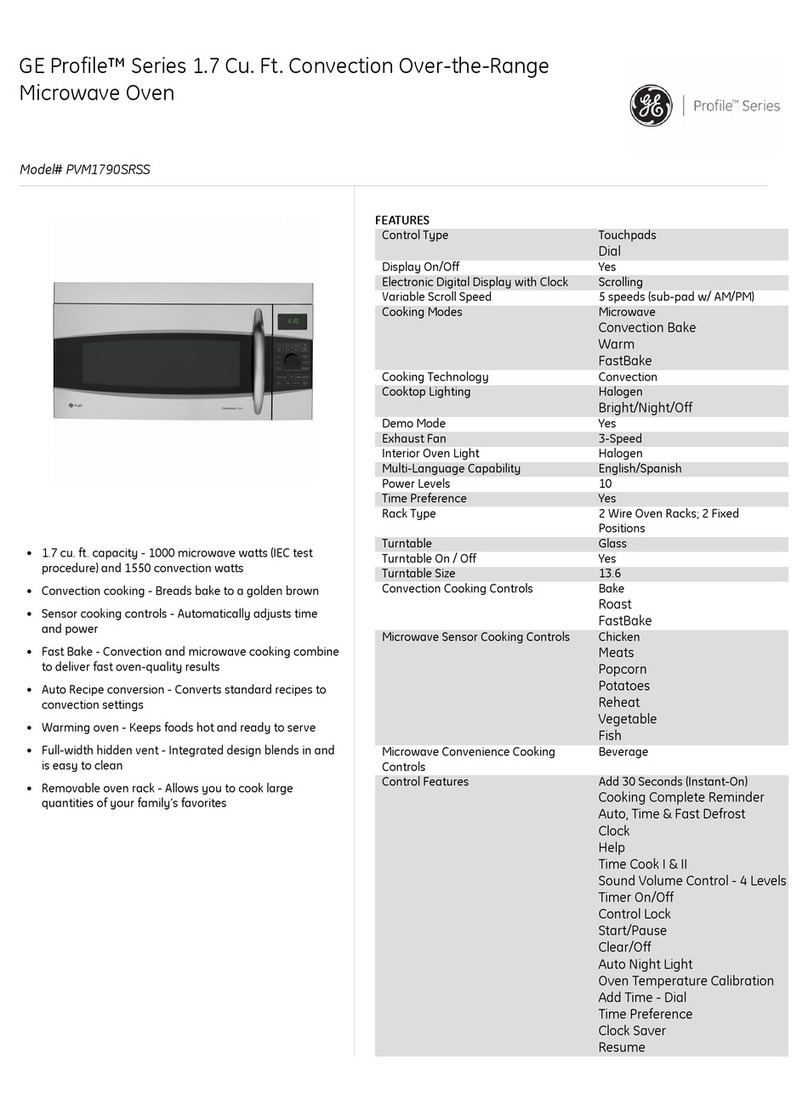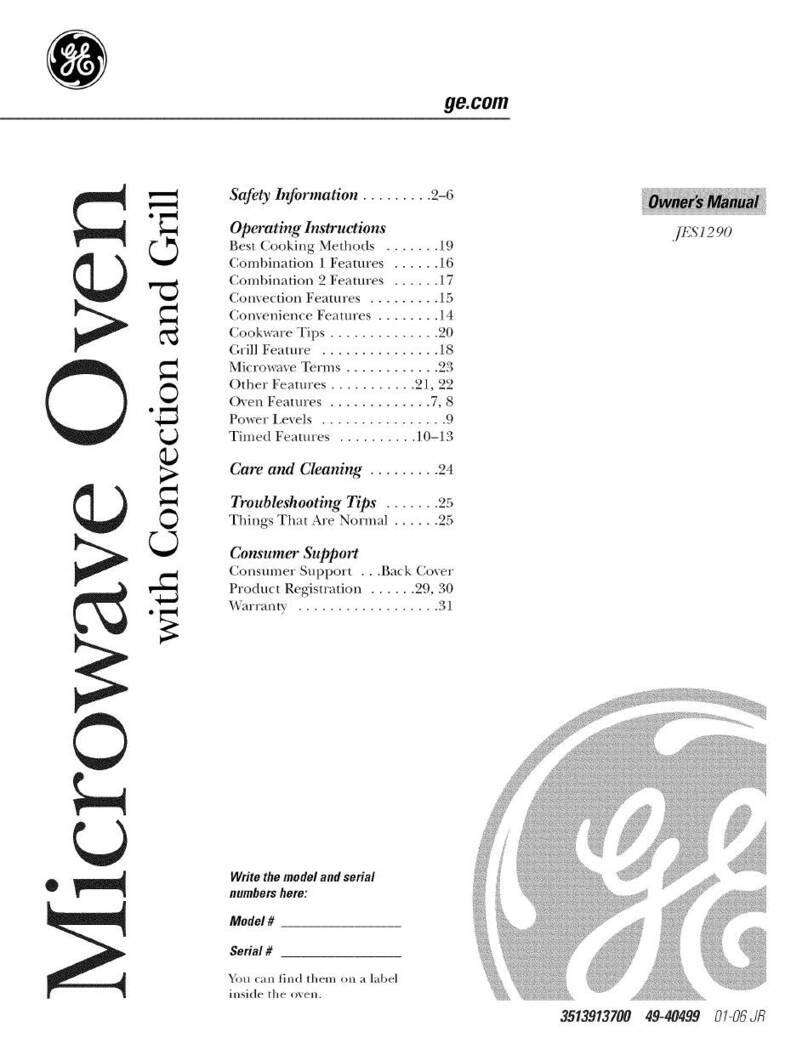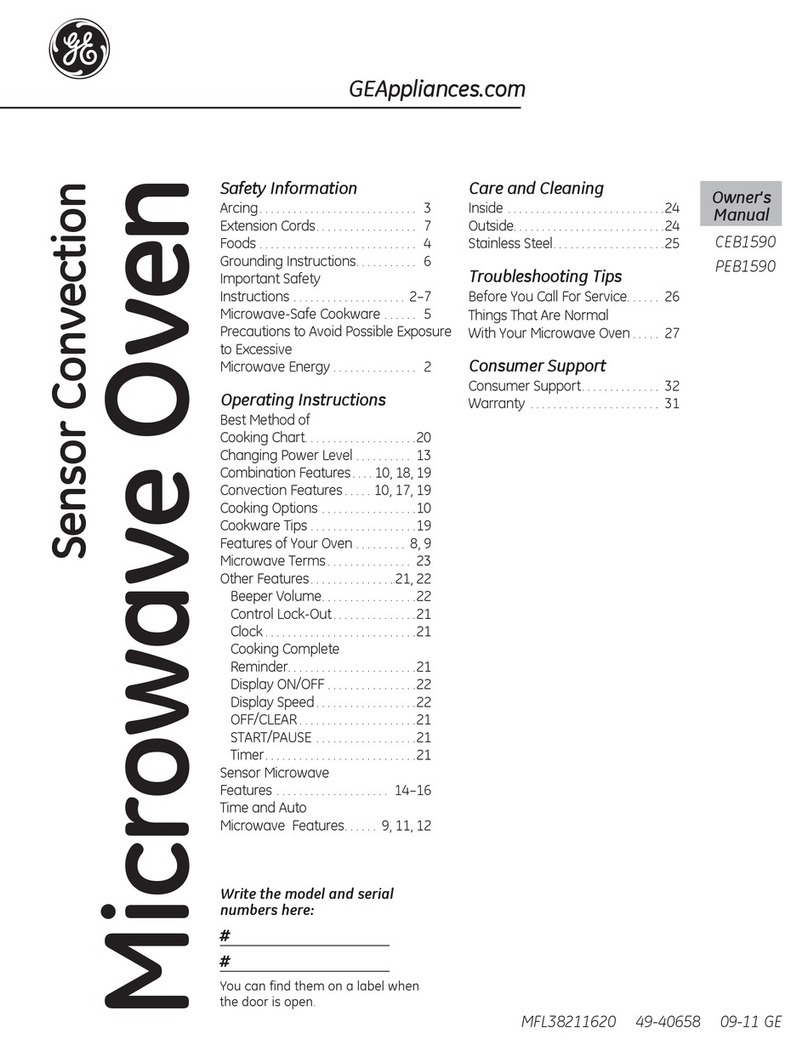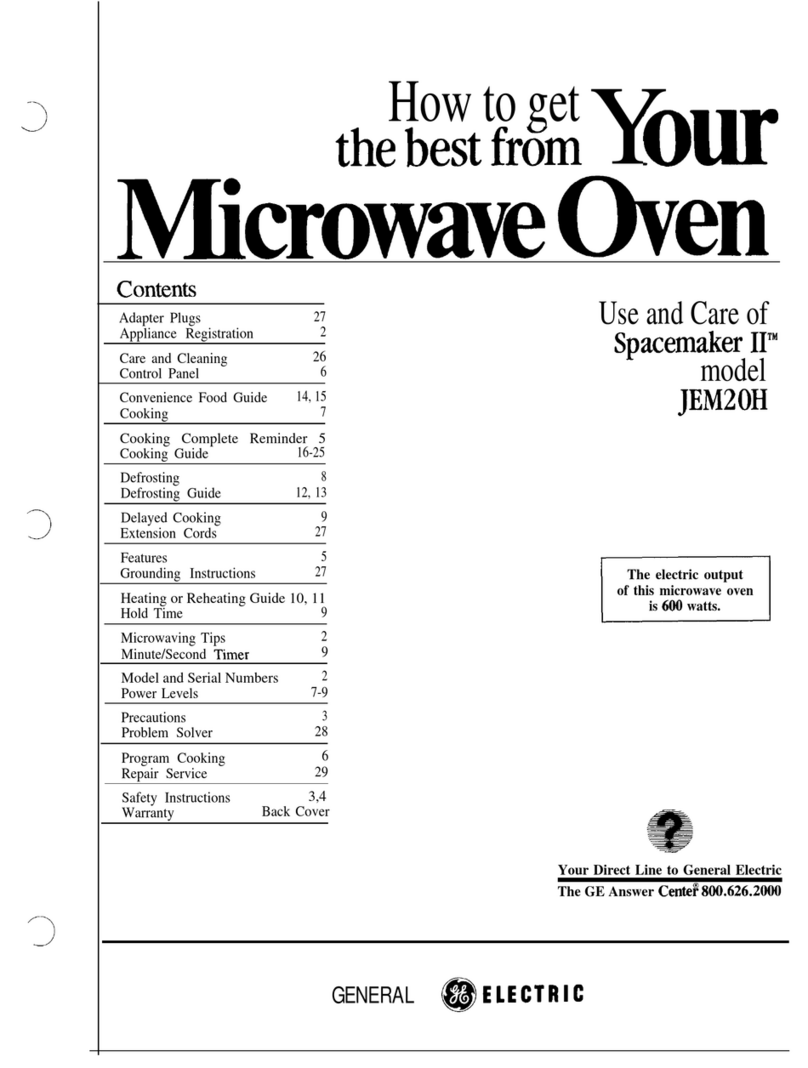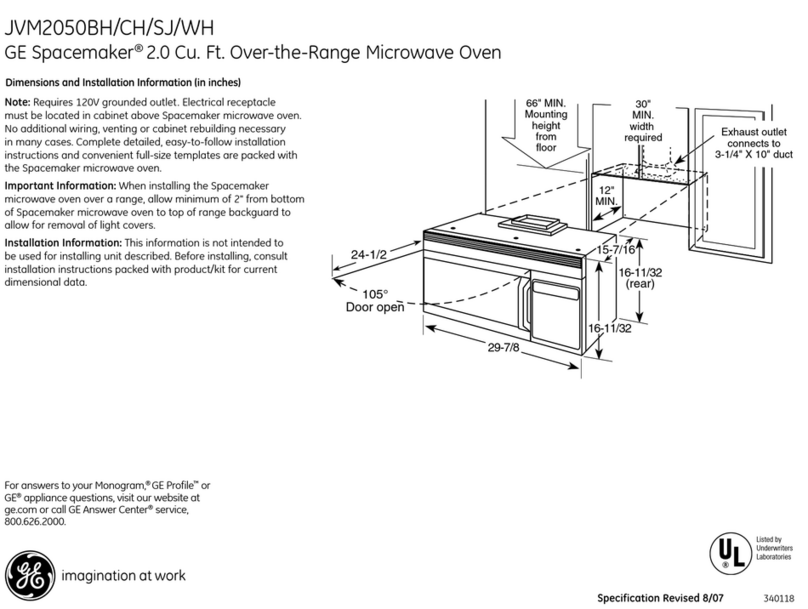Operating Instructions Safety InstructionsConsumer Support Troubleshooting Tips
IMPORTANT SAFETY INSTRUCTIONS.
READ ALL INSTRUCTIONS BEFORE USING.
For your safety, the information in this manual must be followed to minimize the risk of fire or explosion, electric shock,
or to prevent property damage, personal injury, or loss of life.
IMPORTANT SAFETY INSTRUCTIONS.
This microwave oven is not approved or tested for marine use.
Use this appliance only for its intended purpose as described in this Owner’s Manual.
■Read and follow the specific precautions in the
Precautions to Avoid Possible Exposure to Excessive
Microwave Energy section above.
■This appliance must be grounded. Connect only
to a properly grounded outlet. See the Grounding
Instructions section on page 5.
■Install or locate this appliance only in accordance with
the provided installation instructions.
■Be certain to place the front surface of the door 3″or
more back from the countertop edge to avoid accidental
tipping of the appliance in normal usage.
■Do not mount this appliance over a sink.
■Do not mount the microwave oven over or near any
portion of a heating or cooking appliance.
■Do not store anything directly on top of the microwave
oven surface when the microwave oven is in operation.
■Do not operate this appliance if it has a damaged power
cord or plug, if it is not working properly, or if it has
been damaged or dropped. If the power cord is
damaged, it must be replaced by Camco Service or an
authorized service agent using a power cord available
from Camco Inc.
■Do not cover or block any openings on the appliance.
■Use this appliance only for its intended use as described
in this manual. Do not use corrosive chemicals or vapors
in this appliance. This microwave oven is specifically
designed to heat, dry or cook food, and is not intended
for laboratory or industrial use.
■Do not store this appliance outdoors. Do not use this
product near water—for example, in a wet basement,
near a swimming pool, or near a sink.
■Keep power cord away from heated surfaces.
■Do not immerse power cord or plug in water.
■Do not let power cord hang over edge of table or
counter.
■To reduce the risk of fire in the oven cavity:
–Do not overcook food. Carefully attend appliance
if paper, plastic or other combustible materials are
placed inside the oven while cooking.
–Remove wire twist-ties and metal handles from paper or
plastic containers before placing them in the oven.
–Do not use the oven for storage purposes. Do not leave
paper products, cooking utensils or food in the oven
when not in use.
–If materials inside the oven should ignite, keep the oven
door closed, turn the oven off and disconnect the power
cord, or shut off power at the fuse or circuit breaker
panel. If the door is opened, the fire may spread.
■See door surface cleaning instructions in the
Care and cleaning of the microwave oven section
of this manual.
■This appliance should be serviced only by qualified
service personnel. Contact nearest authorized service
facility for examination, repair or adjustment.
■As with any appliance, close supervision is necessary
when used by children.
SAVE THESE INSTRUCTIONS
WARNING!
(a) Do Not Attempt to operate this oven with the door
open since open-door operation can result in
harmful exposure to microwave energy. It is
important not to defeat or tamper with the safety
interlocks.
(b) Do Not Place any object between the oven front face
and the door or allow soil or cleaner residue to
accumulate on sealing surfaces.
(c) Do Not Operate the oven if it is damaged. It is
particularly important that the oven door close
properly and that there is no damage to the:
(1) door (bent),
(2) hinges and latches (broken or loosened),
(3) door seals and sealing surfaces.
(d) The Oven Should Not be adjusted or repaired by
anyone except properly qualified service personnel.
PRECAUTIONS TO AVOID POSSIBLE EXPOSURE
TO EXCESSIVE MICROWAVE ENERGY
2

